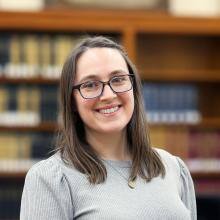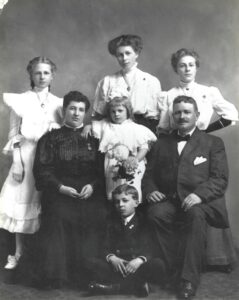As family historians, we often feel inexplicably drawn to certain ancestors in our family trees. Sometimes it’s clear why we are drawn to a particular individual—other times, it’s harder to say. One such ancestor for me is my second-great-grandfather, Jacob Spuhler. While I thought I knew quite a bit about him at the start, as I researched the details of his life, I soon discovered a hidden piece of family history I had not expected.
Jacob Spuhler was an immigrant from Germany who arrived in New York City in October 1884. Lucky for me, the name of his hometown—Alsenz—was passed down to me through the generations. Already having a crucial piece of the puzzle did not deter me from delving deeper, and as I researched Jacob’s life, I found plenty more to learn.
His story seemed fairly cut-and-dry at the outset. According to family legend, Jacob was a stone-carver who worked on the Cathedral of St. John the Divine in New York City. He married fellow German immigrant Johanna Weigert and had five children with her, including my great-grandmother Annie in 1890, and an additional child who died in infancy. They lived in Manhattan and eventually moved to the Bronx. Jacob died in 1924 and Johanna in 1939, and they were buried at Woodlawn Cemetery in the Bronx.
I was able to locate the births of Annie and her siblings in New York City vital records. I was perplexed by my inability to locate a marriage record for Jacob and Johanna and by my discovery of another Jacob Spuhler in the archives—or so I thought! This Jacob married a woman named Elizabeth Bohley in November 1884, shortly after my Jacob's arrival in New York. Jacob and Elizabeth had two children together, born in 1885 and 1888.
Further research on the Spuhlers revealed that they were among three of the main families in Alsenz involved with stonemasonry, and that the Bohleys were another such family.1 If this Jacob was indeed my ancestor, could his marriage to Elizabeth have been arranged in advance, in the hopes of starting a new stone-carving dynasty in New York City? Jacob and Elizabeth must have separated in 1888 or 1889—searching for formal divorce papers is still on my to-do list. Any lingering doubts about the connection were erased when a descendant of Jacob and Elizabeth showed up in my AncestryDNA matches. I learned that Elizabeth (Bohley) Spuhler moved out of New York City with her children and settled in Ohio, where she styled herself a widow and died in 1940.
Eventually, I was able to locate the marriage of my second-great-grandparents Jacob and Johanna. They were married across the river in New Jersey in 1892, after their first two children were born in New York City in 1890 and 1891. They were married in a church only three miles from where I grew up.
Setting aside Jacob's two marriages, there is one other question remaining. I have yet to locate a record of Jacob's baptism, despite browsing through the Lutheran church books from Alsenz for the appropriate time period. His parents' marriage, father's birth, and mother's death all appear in the book, but Jacob's and his sister's baptisms are absent.
With all the mystery surrounding him, Jacob is an ancestor I keep coming back to—and I hope that, in due time, all will be revealed!
Notes
Share this:

About Hallie Kirchner
Hallie Kirchner is a genealogist and part of the team that performs research-for-hire for patrons. In addition to working with patrons to answer their family history questions, Hallie also helps with the Ask-A-Genealogist chat service and has worked on a variety of educational programs during her time at American Ancestors. Her areas of expertise include 19th-century America, Germany, and immigration.View all posts by Hallie Kirchner →
